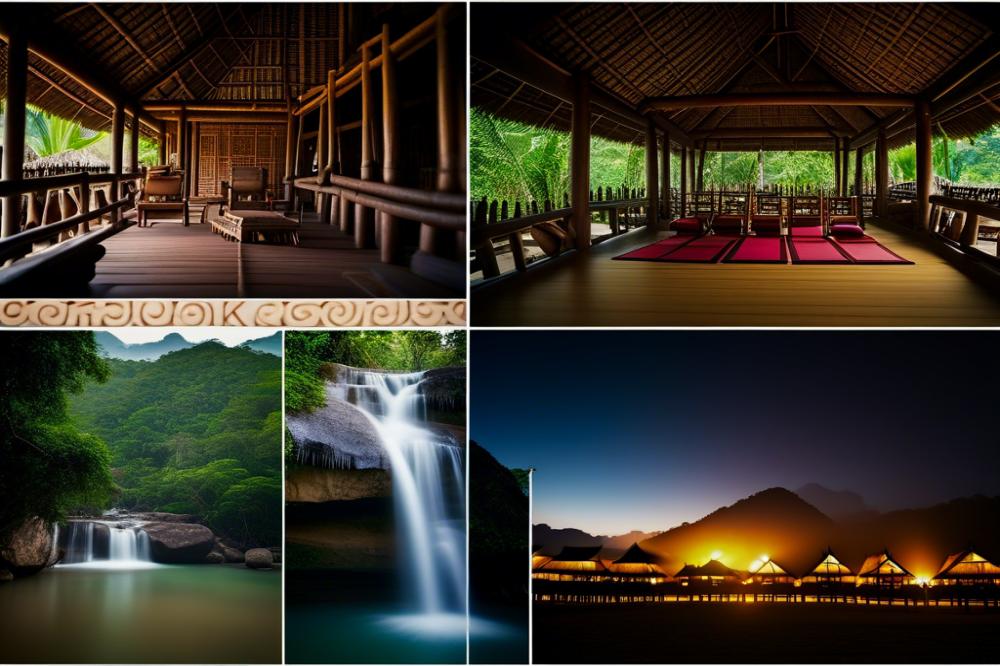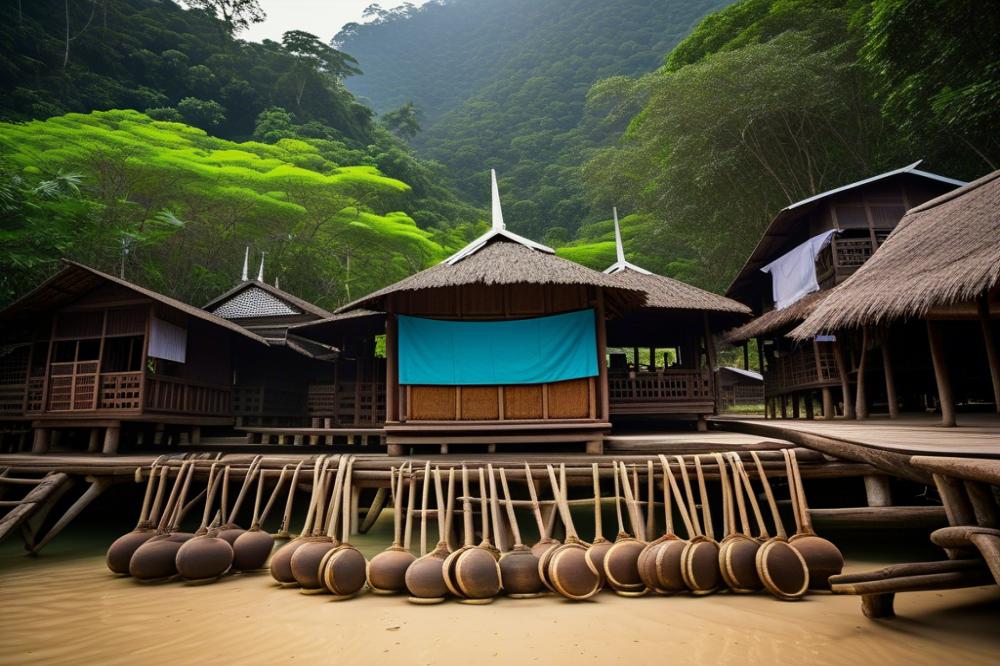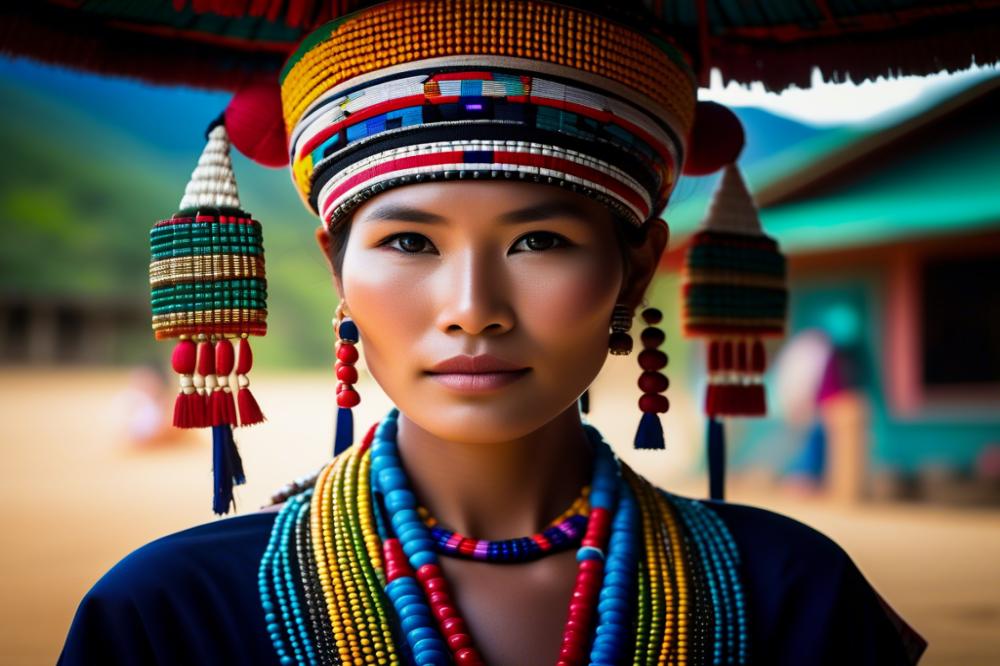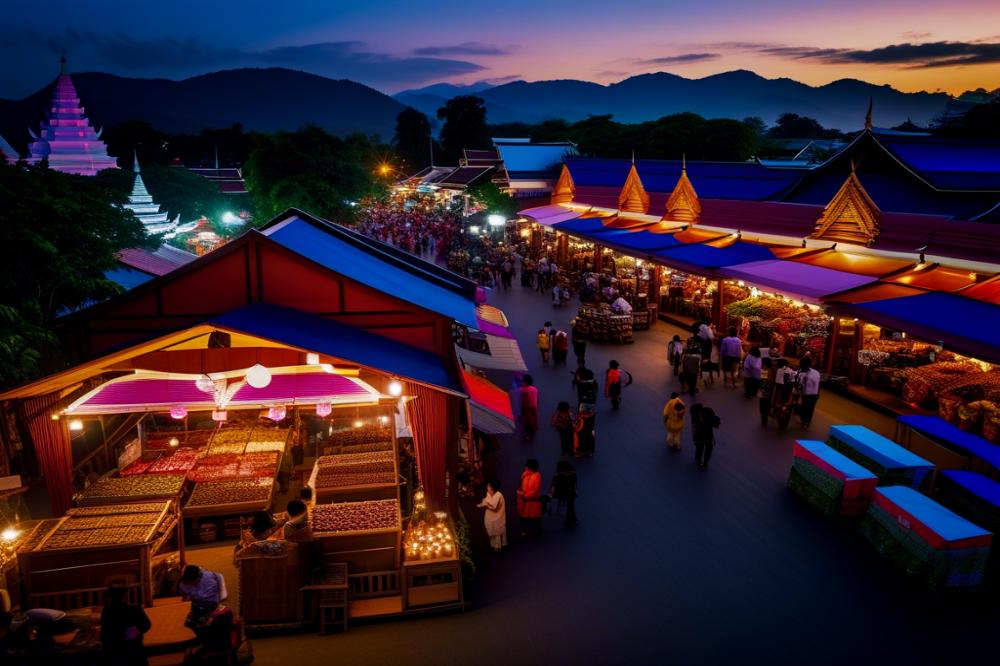Discovering the unique culture of the Karen Long Neck Villages
The Karen tribe is one of the many ethnic groups residing in the hill regions of Thailand and Myanmar. Their distinct way of life has captured the interest of many visitors from around the globe. Among the most notable in this group are the long neck women, who are well-known for wearing brass coils around their necks. These coils symbolize beauty and cultural identity. The practices surrounding these traditions have been passed down through generations, forming a rich tapestry of cultural heritage.
The significance of ethnic diversity in this region cannot be overstated. Interactions among different groups create a vibrant atmosphere where customs and traditions flourish. The Karen Long Neck community is an important part of this mix, showcasing their handmade crafts and traditional attire to tourists eager to learn about their way of life.
This article aims to provide an insightful look into the lives of the long neck women and their communities. Readers can expect to uncover the stories behind their unique culture, the challenges they face, and the beauty of their traditions. Exploring the significance of tourism in supporting their livelihoods will also be discussed. Together, these aspects emphasize the importance of understanding and appreciating the cultural nuances of diverse communities.
Understanding the Karen Long Neck

Origin and History of the Karen tribe
The Karen tribe, also known as the Kayin, is one of many ethnic groups in Southeast Asia. Their roots trace back to Myanmar, where they have lived for centuries. Over time, many members migrated into Thailand. This movement was often due to political unrest and conflicts in their homeland. Despite the challenges, they have maintained a rich cultural heritage. Today, they live primarily in villages near the borders of Thailand and Myanmar.
Description of the Long Neck Tradition among Women
One of the most striking features of the Karen women is their long necks. This tradition is created by wearing brass rings, which begin in childhood. As girls grow older, more rings are added. The belief is that this practice enhances beauty, but it also carries deep cultural significance. The rings can weigh several kilograms. For some, this practice may seem unusual, but for these women, it is a proud part of their identity.
Cultural Significance of the Neck Rings and Their Meaning
The neck rings symbolize tradition and status within the community. They signify a woman’s maturity and readiness for marriage. Removing the rings is often impossible and can lead to serious injury. For these women, the rings are not just accessories; they reflect their history and customs. Additionally, the longer the neck, the more a woman is admired. This beauty standard is cherished in their society, making the tradition very important.
Comparison with Other Hill Tribes in the Region
In the region, various hill tribes have their own distinct customs. While the Karen Long Neck women are well known for their neck rings, other tribes also have unique practices. Tribes like the Hmong and Lisu display their artistry through handmade crafts. Their traditional clothing and jewelry differ from those of the Karen. Each group adds to the ethnic diversity of the region. Despite their differences, these communities share similarities in preserving their traditions amidst modernization and tourism. Both locals and visitors often appreciate these cultural practices, which can be seen as a unifying bond among the tribes.
Traditional Practices and Daily Life

Overview of Daily Life in Karen Long Neck Villages
Life in the Karen villages, nestled in the hills of Thailand and Myanmar, is a blend of tradition and necessity. The rhythm of each day centers around family and community. Most villagers rise early to tend to daily chores. Farming plays a significant role, with crops like rice and vegetables being cultivated for sustenance. Livestock such as chickens and pigs also provide food and income. Food remains central to their culture, with meals often prepared together in a communal setting.
Traditional Customs and Rituals
Various customs highlight the ethnic diversity of the Karen tribe. Rituals are seen during festivals, which often celebrate the harvest or honor ancestors. Unique ceremonies mark important life stages, like births and marriages. Women play a crucial role in preserving cultural heritage, particularly through their intricate handmade crafts. Weaving traditional textiles requires skill and patience, and it connects generations of women in the community. These practices are not merely artistic; they hold deep cultural significance.
Role of Family and Social Structure
Family structures within these villages tend to be tight-knit. Families usually live together in simple wooden houses, often passed down through generations. Elders command respect and provide wisdom. The strong emphasis on family bonds helps maintain social cohesion. Children actively learn traditional skills from their parents. Friends and neighbors often come together to support one another, especially during times of need.
Impact of Modernity on Traditional Practices
Modern influences have begun to touch the lives of the long neck women and their communities. Increased tourism has brought both challenges and opportunities. While some traditions face pressure from outside influences, many villagers strive to adapt without losing their identity. Younger generations often balance traditional practices with modern aspirations. The introduction of new technologies has changed how villagers communicate and conduct business but can also dilute their cultural practices. Amid these changes, there remains a strong desire to preserve their rich heritage.
Cultural Heritage and Artisanship

The Karen tribe is known for its vibrant cultural heritage and skilled craftsmanship. Their handmade crafts reflect traditional practices that have been passed down through generations. Visitors often marvel at the intricate designs found in textiles, jewelry, and other artistic expressions. Each piece tells a story, connecting the past with the present.
Preserving cultural heritage through these crafts is crucial for the Karen people. As they face the pressures of modernization, maintaining their artistic traditions becomes more challenging. Handmade items not only serve as a means of income but also as a way to keep their history alive. Ethnic diversity within the region further enriches these crafts, making them stand out even more.
In recent years, tourism has significantly influenced local artistry. Many tourists seek authentic experiences that allow them to engage with the culture. This interest provides opportunities for artisans to showcase their work. However, it can also create a dilemma. While tourism can uplift communities, it risks altering traditional practices to cater to visitor expectations.
For those interested in arts and crafts, the experience can be deeply rewarding. Visitors often participate in workshops where they learn from the long neck women themselves. Engaging in these activities offers a deeper connection to the local culture. It fosters appreciation for the hard work that goes into each handmade creation. Ultimately, understanding the context of these crafts can lead to a more respectful relationship between tourists and the hill tribes.
Tourism and Community Impact

Growth of tourism in the Karen Long Neck villages
Tourism has significantly increased in the villages of the Karen tribe. Visitors flock to see the long neck women, known for their distinctive neck rings. This rise in interest has brought attention to the cultural heritage of this ethnic group. Many tourists buy handmade crafts, adding financial benefits to the community. Local markets now flourish with colorful textiles and jewelry. As a result, more families have found new sources of income. However, growth in visitor numbers has led to both positive and negative outcomes.
Challenges faced by communities due to increased visitor numbers
An influx of tourists can disrupt traditional practices. With many outsiders visiting, some fear that their way of life may change. Often, the villagers struggle to maintain their customs amid the crowd. Increased pressure from visitors also raises concerns about sustainability. Overcrowded spaces make it difficult for families to live peacefully. Some community members worry about the commercialization of their culture. Striking a balance will require careful consideration of the local context.
Balancing cultural preservation with tourism development
Finding a way to safeguard cultural identity while welcoming tourism presents a real challenge. Communities are working hard to balance economic benefits with the need to protect their traditions. Engaging with tourists provides income, but it can also dilute their cultural practices. Establishing guidelines on interactions may be necessary. Respect for local customs can help tourists appreciate the beauty of the hill tribes. Community leaders encourage visitors to learn about their history, rather than just taking photos.
Ethical considerations for tourists visiting the villages
Travellers should consider the implications of their visits to these villages. Respect is crucial; the Karen tribe’s way of life is not a performance for entertainment. Engaging meaningfully with the community helps foster understanding. Tourists can support local businesses through respectful buying practices. It’s essential to listen and learn during visits rather than dominate conversations. Awareness of the unique social fabric of these communities will enhance the visitor experience. Ethical tourism promotes a deeper connection to the cultural landscape of Thailand and Myanmar.
Exploring the Villages: Visitor Experiences
Guide to the Best Times to Visit
The best time for a visit to the Karen villages is during the dry season. From November to February, temperatures are cooler and rainfall is minimal. Mornings are fresh, making it perfect for exploring. This period also attracts fewer tourists, allowing for a more authentic experience. If possible, avoid the peak holiday months when visitors flock to the region.
Activities and Experiences Available for Tourists
Tourists can partake in various activities while visiting. Guided village tours often include demonstrations of traditional practices. Visitors can observe long neck women as they weave and craft intricate handmade items. Hiking nearby trails offers breathtaking views of the landscape. Many also choose to buy local crafts as a way of supporting the community. Photography is encouraged, but it’s crucial to ask permission first.
Tips for Respectful and Meaningful Engagement with the Community
Respect is vital when interacting with the Karen tribe. Engage with villagers in a friendly manner. Learning a few words in their language can go a long way. Be mindful of cultural customs and ask before taking photos. Supporting local businesses helps preserve their cultural heritage. Understanding the significance of the long neck tradition is crucial; it goes beyond mere appearance.
Recommendations for Local Guides and Cultural Tours
Choosing a knowledgeable guide is essential for a meaningful experience. Seek out local guides who are part of the tribes themselves. They often share firsthand stories that enrich your understanding. Look for tour companies that promote ethical tourism. This ensures that your visit benefits the community. Many guides offer customizable tours, allowing you to explore areas of personal interest.
Wrapping Up the Culture of the Karen Long Neck Community
The culture of the Karen tribe is truly fascinating. Their traditions help to shape not just their own identity, but also the identity of Thailand as a whole. One can find beauty in their rituals, clothing, and especially the distinct neck rings worn by the women. These traditions tell stories of resilience and endurance, making them vital for understanding the broader tapestry of global cultures.
Tourism plays a crucial role in this context. Visitors to the villages provide much-needed economic support. Local crafts and services benefit from the influx of tourists, helping to sustain their way of life. However, it is important to approach this knee-deep in respect. Responsible tourism practices can provide resources without overshadowing their culture or exploiting their lifestyle.
As travelers, everyone has a responsibility. It is essential to engage thoughtfully with the community. Verbal exchanges, careful observation, and a genuine interest in their way of life can foster mutual understanding. Respect for local customs should always guide interactions with the Karen community.
Finally, reflection on the ethnic diversity found in Thailand reveals a rich cultural heritage. Each group, like the Karen, adds its own flavor to the nation. This blend of traditions is what makes the world vibrant and worthwhile. By cherishing these differences, everyone can help preserve them for future generations.



